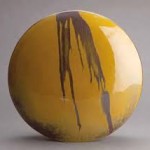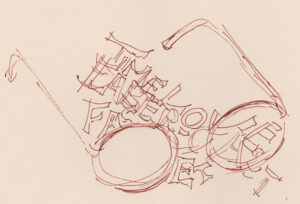 Have you ever written poetry? Not to produce a poem as professional poets do or with the aim of creating something to be admired, but just for the fun of playing with words, being friendly with them? Sestinas are a poetic form, where 6 words are used over and over again in 7 stanzas, no rhyming. (A good example is Elizabeth Bishop’s poem entitled Sestina, which was my first introduction to the form in the book, The Redress of Poetry by Seamus Heaney.) In a college class I taught, students were asked to write sestinas to explore who they were and picked words that resonated with them or meant something to them. The repetition took them beyond the superficial as they continued with repetition to put the words in different contexts, with a final stanza pulling all together. Although skeptical to start with, most of them quite appreciated the process in the end, and many also enjoyed the opportunity to share their final poem with others if they wanted to.
Have you ever written poetry? Not to produce a poem as professional poets do or with the aim of creating something to be admired, but just for the fun of playing with words, being friendly with them? Sestinas are a poetic form, where 6 words are used over and over again in 7 stanzas, no rhyming. (A good example is Elizabeth Bishop’s poem entitled Sestina, which was my first introduction to the form in the book, The Redress of Poetry by Seamus Heaney.) In a college class I taught, students were asked to write sestinas to explore who they were and picked words that resonated with them or meant something to them. The repetition took them beyond the superficial as they continued with repetition to put the words in different contexts, with a final stanza pulling all together. Although skeptical to start with, most of them quite appreciated the process in the end, and many also enjoyed the opportunity to share their final poem with others if they wanted to.
I am currently writing sestinas myself as a daily exercise. I pick my 6 words, sometimes the day before, and then in my morning contemplative time I write one. These are not intended to be great poems, or read by anyone other than me, but the stretching into the words, the playing with them, the exploration – this feels good. I dig into my desires and emotions that are under the surface, unarticulated. I sometimes pick words from my journal from the day before, or take a theme of interest to me, and pick words related to that.
Structure helps. I follow the requirement of having the 6 words at the end of each line in the first 6 stanzas, in a set order, and then pull all together in the last 3-line stanza using all 6 words, which feels very satisfying. You may want to try this. The rules seem complicated at first, but once you get the hang of it, it really is simple to follow as you go from one set to another as in a square dance, picking up the last word in the last line, and making that occur at the end of the first line in the next stanza.
We so often think of poetry in terms of the end result, the poem itself to be read and hopefully appreciated. But this exercise of writing these sestinas has no such aim. My aim is to become friendly with words again, and to dig into my thoughts and feelings that are bubbling under the surface, and give them air.
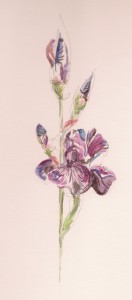 This iris was nestled between the weeds outside my front door. After painting this, I realized that each iris I see looks different. The irises have not changed, but I am seeing each of them in new ways. Previously when I looked at it I would have thought, ‘Oh yes, another iris,’ and put it into a file of cartoon-like irises in my mind – maybe some color variations, but basically all the same. But each iris has a particular quality, exists in a particular space, and is seen by me in a moment that for me is different from all those before and after. Each human being needs to be viewed like that too. We put each other into boxes and categories so easily, yet each one of us is so distinct, and each encounter is so different.
This iris was nestled between the weeds outside my front door. After painting this, I realized that each iris I see looks different. The irises have not changed, but I am seeing each of them in new ways. Previously when I looked at it I would have thought, ‘Oh yes, another iris,’ and put it into a file of cartoon-like irises in my mind – maybe some color variations, but basically all the same. But each iris has a particular quality, exists in a particular space, and is seen by me in a moment that for me is different from all those before and after. Each human being needs to be viewed like that too. We put each other into boxes and categories so easily, yet each one of us is so distinct, and each encounter is so different. Have you ever written poetry? Not to produce a poem as professional poets do or with the aim of creating something to be admired, but just for the fun of playing with words, being friendly with them? Sestinas are a poetic form, where 6 words are used over and over again in 7 stanzas, no rhyming. (A good example is Elizabeth Bishop’s poem entitled
Have you ever written poetry? Not to produce a poem as professional poets do or with the aim of creating something to be admired, but just for the fun of playing with words, being friendly with them? Sestinas are a poetic form, where 6 words are used over and over again in 7 stanzas, no rhyming. (A good example is Elizabeth Bishop’s poem entitled  I ‘listen’ to poetry to hear what speaks to me. Each of us hears a poem in a different way. I have been finding nourishment in these lines from the poem “Somewhere” (from Laboratories of the Spirit, Macmillan 1975) by the Welsh poet R.S.Thomas.
I ‘listen’ to poetry to hear what speaks to me. Each of us hears a poem in a different way. I have been finding nourishment in these lines from the poem “Somewhere” (from Laboratories of the Spirit, Macmillan 1975) by the Welsh poet R.S.Thomas.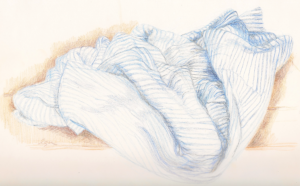 Is being vulnerable something we should avoid at all costs? There is a welcoming quality in vulnerability. Who wants to be hugged by, or hug, a suit of armor? This quilt on my sofa invites someone to sit on it. Not like metal, square edges, hard corners, which might represent a ‘cool’ place. Softness represents invitation and warmth. Soft, vulnerable people can easily get injured, but also create a safe space, a welcoming space, for someone to relax and rest, and be who they are.
Is being vulnerable something we should avoid at all costs? There is a welcoming quality in vulnerability. Who wants to be hugged by, or hug, a suit of armor? This quilt on my sofa invites someone to sit on it. Not like metal, square edges, hard corners, which might represent a ‘cool’ place. Softness represents invitation and warmth. Soft, vulnerable people can easily get injured, but also create a safe space, a welcoming space, for someone to relax and rest, and be who they are.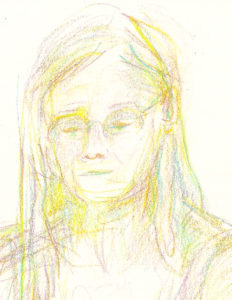
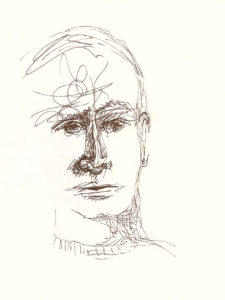
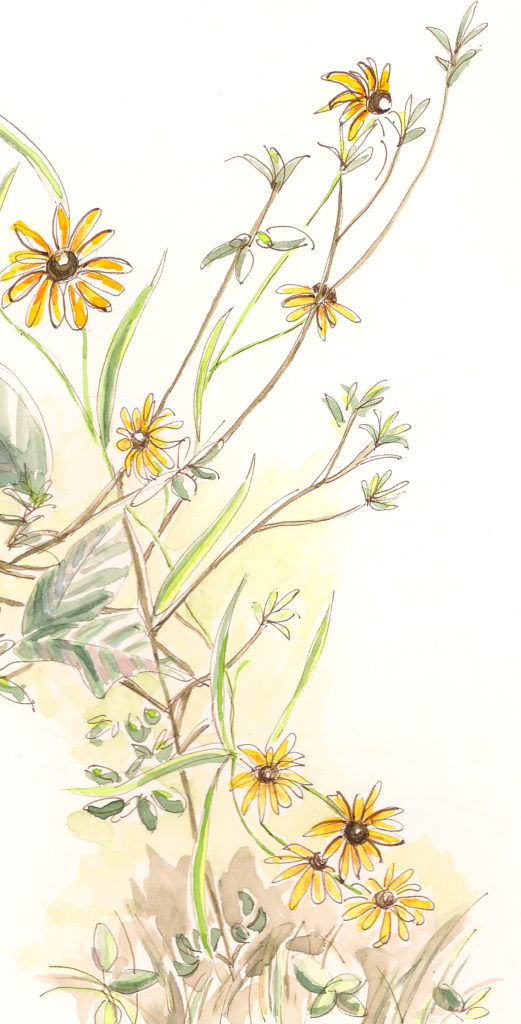 weeds are just plants that are growing in the wrong place. I recently drew some plants of indeterminate nature outside our front door. A final burst of flowers before autumn hits. I often have trouble telling weeds from flowers. It is the same in my life too – sometimes those things I am sure are weeds, end up with beautiful blooms.
weeds are just plants that are growing in the wrong place. I recently drew some plants of indeterminate nature outside our front door. A final burst of flowers before autumn hits. I often have trouble telling weeds from flowers. It is the same in my life too – sometimes those things I am sure are weeds, end up with beautiful blooms.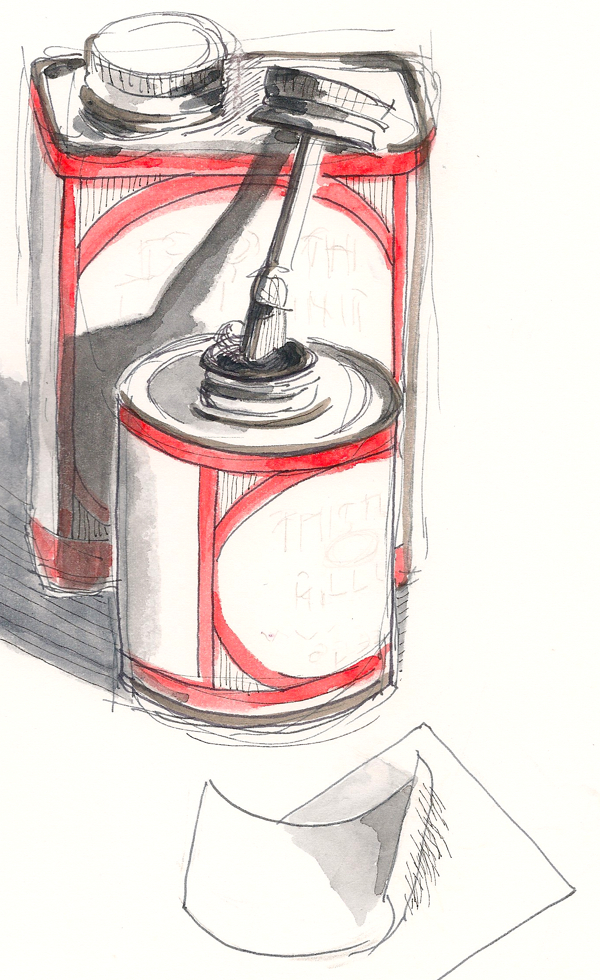
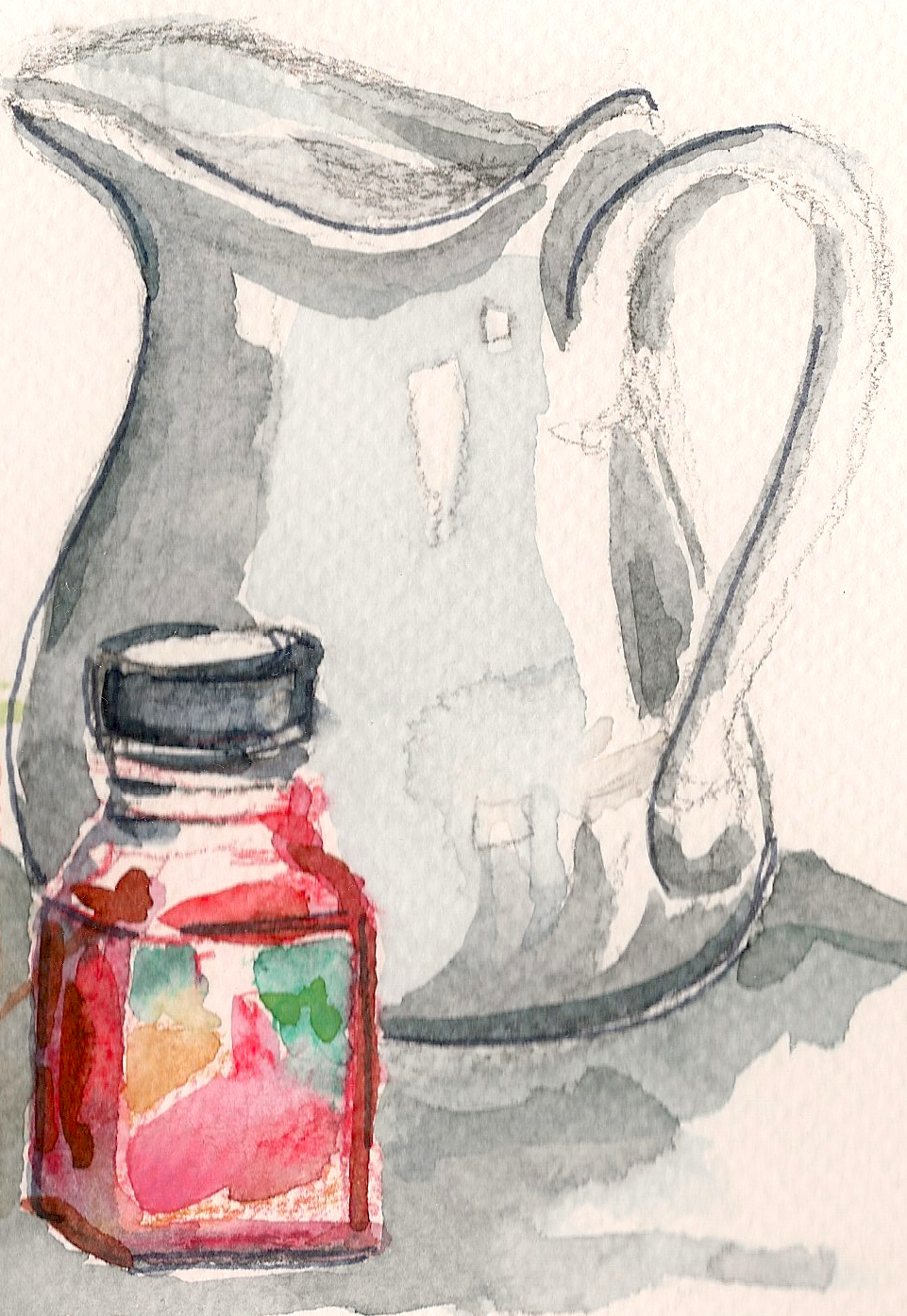
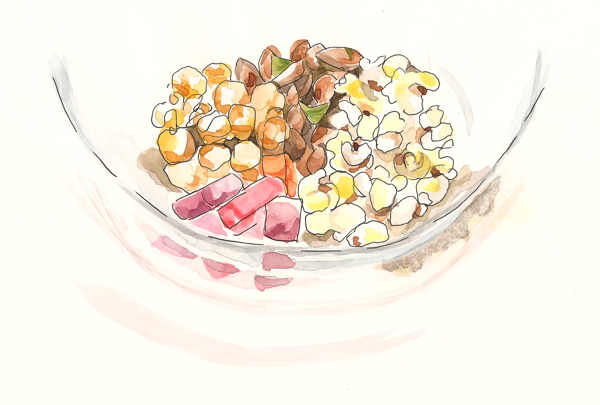
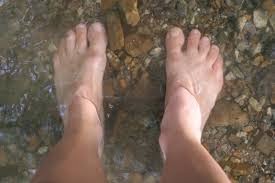

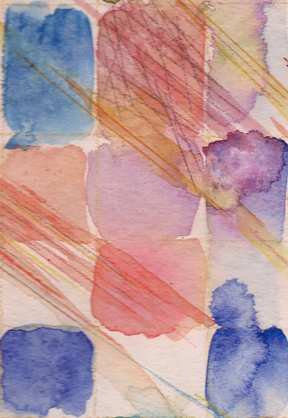
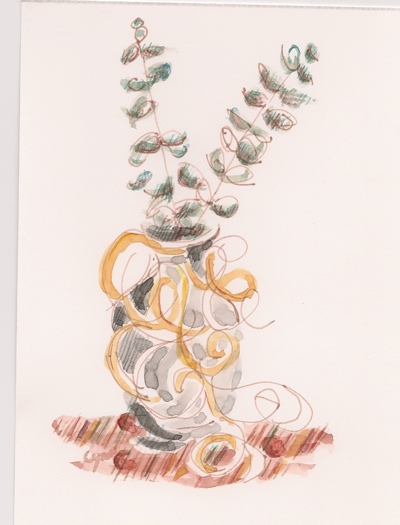
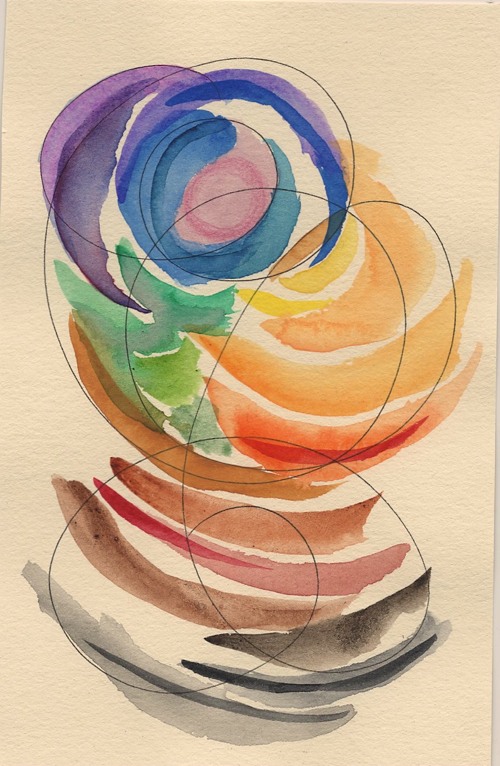
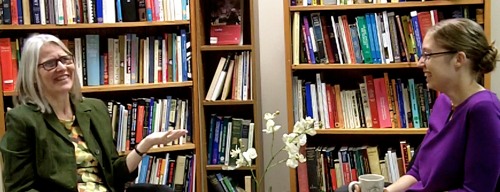 This summer I was invited to give a presentation on the Daily Spiritual Experience Scale at the School of Conflict Analysis and Resolution at George Mason University. One of the uses of the 16 Daily Spiritual Experience Questions is in opening conversations to bridge differences in beliefs, and help in community building. After the presentation and the lively discussion, Jacqueline Greiff, the Executive Director of their Center for Peacemaking Practice, invited me to be interviewed. You can listen to a podcast of this by scrolling to the bottom of the page at
This summer I was invited to give a presentation on the Daily Spiritual Experience Scale at the School of Conflict Analysis and Resolution at George Mason University. One of the uses of the 16 Daily Spiritual Experience Questions is in opening conversations to bridge differences in beliefs, and help in community building. After the presentation and the lively discussion, Jacqueline Greiff, the Executive Director of their Center for Peacemaking Practice, invited me to be interviewed. You can listen to a podcast of this by scrolling to the bottom of the page at 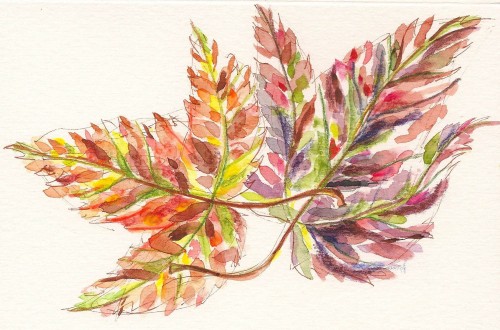 I noticed these leaves while out walking today, and picked up these two from the grey pavement to take home. I drew and painted them to help the beauty stick with me longer. As they sit here on the table together, I also find myself thinking about my relationships with those I am close to.
I noticed these leaves while out walking today, and picked up these two from the grey pavement to take home. I drew and painted them to help the beauty stick with me longer. As they sit here on the table together, I also find myself thinking about my relationships with those I am close to.